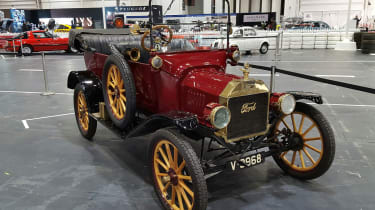History of the electric car: from the first EV to the present day | Auto Express
The development of all-new electric cars is firmly at the front and centre of nearly every major manufacturer’s future plans, with most makers teeing up electric product offensives in the next decade. It’s firmly seen as the future, but the EV is hardly a new development. Electric cars have been quietly humming in the background for generations.
A quick glance at the history books reveals production electric cars have been around just as long as their internal combustion-engined counterparts, dating back to the late 19th century. This is no big surprise; electricity has been seen as a conceivable means of propulsion since the car’s inception, especially compared with alternatives at the time.
• Best electric cars
The abilities of early cars and the state of early roads meant journeys were typically short, and vehicles for the most part were confined to the boundaries of the city. Here lies an interesting parallel with contemporary electric cars – for quick urban journeys they made just as much sense in the motor car’s infancy as they do today.
Steam-powered vehicles of the time could take up to an hour to prepare and heat for a journey, while early combustion-engined cars were dirty, unreliable, and difficult to start and operate. By comparison, electric cars were seen as convenient, easy-to-use choices with no gears.
Pinpointing responsibility for the birth of the electric car isn’t straightforward; its creation is down to the work of a number of pioneers and inventors. The electric motor is often credited to Hungarian engineer Anyos Jedlik, while French physicist Gaston Plane invented commercial, rechargeable lead-acid batteries in 1859. It took an Englishman – Thomas Parker – to combine the two in a carriage to create the first production electric car, built in London in 1884.
To really get a sense of the early impact of the electric car, though, it’s best to look stateside. The years around the turn of the 20th century are often described as a golden age of electric motoring, due to a strong EV presence on the streets of US cities. In 1897, the first commercial users of electric carriages were New York City taxi drivers; the city’s fleet eventually grew to over 60 electric cabs. Some historians estimate that around a third of cars on American streets in 1900 were electric, while some sources claim EVs outsold combustion cars in 1899 and 1900. These cars were city dwellers only, though, with ranges and top speeds in the teens.
Here in Europe, Walter Bersley’s ‘Hummingbird’ taxis would sometimes be spotted on the streets of London, while the first car to bear Ferdinand Porsche’s name – the P1 from 1898 – was electric.

However, this early popularity was built more on the shortfalls of combustion cars than the abilities and accessibility of EVs. Various factors contributed to a fast decline. Shrinking oil prices and mass production techniques pioneered by Ford with the Model T in 1908 meant combustion-engined cars soon became cheaper, plus easier to use thanks to advances such as electric starter motors. Growing road networks also meant growing demand for faster cars with longer ranges and quicker fill-up times.
It led to a dark age for electric cars which lasted for much of the 20th century, as affordable petrol vehicles revolutionised how we got around. The electric motor meanwhile, found a long-term new home in the humble milk float as car makers turned their backs on the technology.

A mild revival was sparked during the oil crises of the seventies, and the electric car made an unworldly cameo in 1971; the electric Lunar Roving Vehicle was the first car driven on the moon, with a range of 57 miles. Electrified versions of the BMW 1600, boasting 43bhp Bosch motors and regenerative braking, starred at the 1972 Munich Olympics as marathon support vehicles.
When car manufacturers began to return to EVs in the nineties in response to tightening environmental laws, their offerings were produced in tiny numbers and most were crude conversions of conventional models.
Still, this era did give us a taste of the future. In 1996, General Motors released the EV1 – the first mass-produced, purpose-built modern electric car from one of the industry’s key players. It was released under a leasing programme, and just over 1,000 were produced, but the saga ended in controversy. When GM axed the EV1 programme in 2003, many models were removed from the road and crushed.

Since then, electric cars have crept more into the conscience of consumers and the industry as a whole thanks to the advancement of hybrid tech, government subsidies, new regulations, increasing environmental concerns and, importantly, large technological advances. As such, the EV is dropping its sideshow reputation and increasingly becoming the next logical step, given cars with comparable ranges and prices to petrol cars are within sight.















![Toni Kroos là ai? [ sự thật về tiểu sử đầy đủ Toni Kroos ]](https://evbn.org/wp-content/uploads/New-Project-6635-1671934592.jpg)


